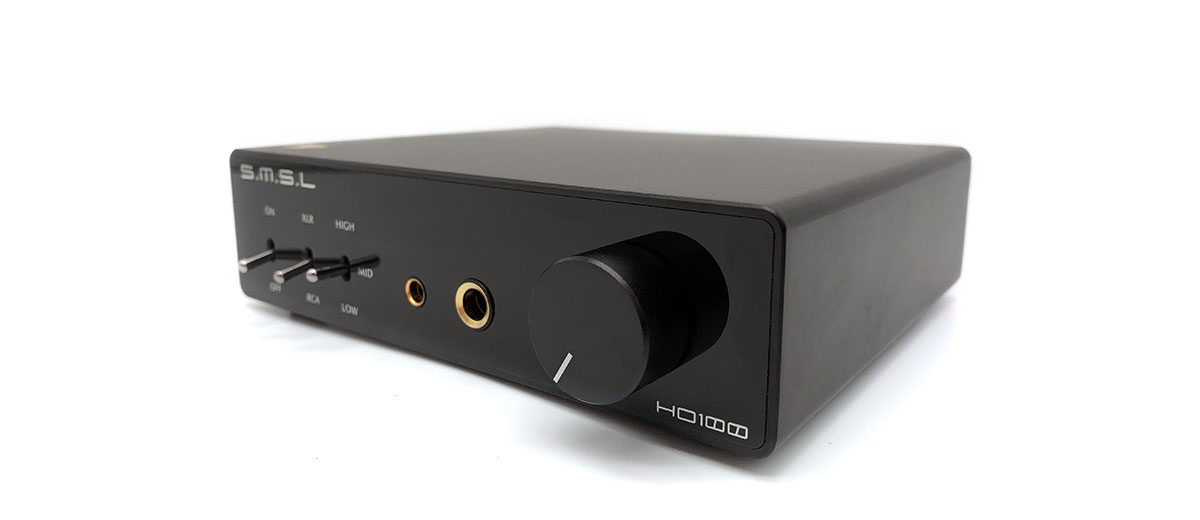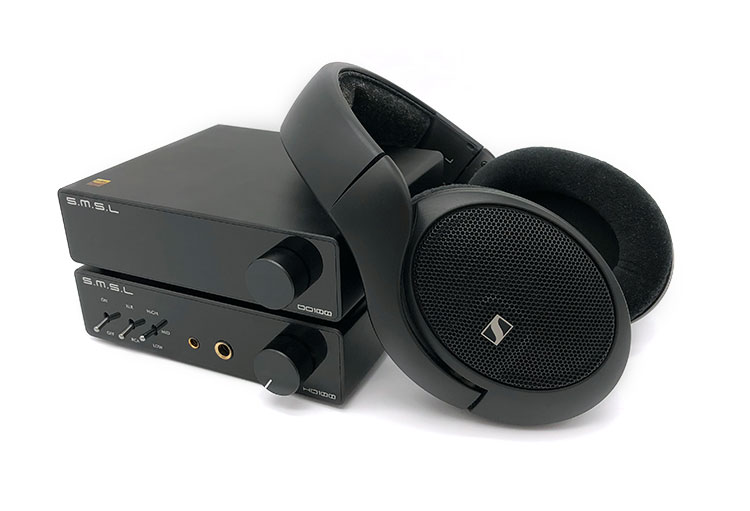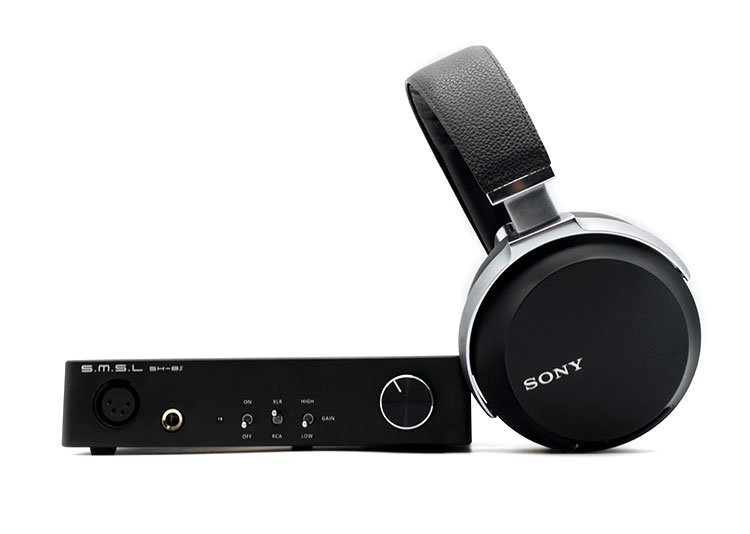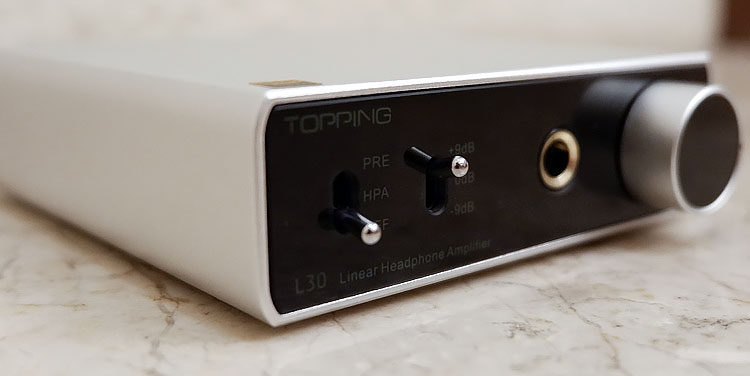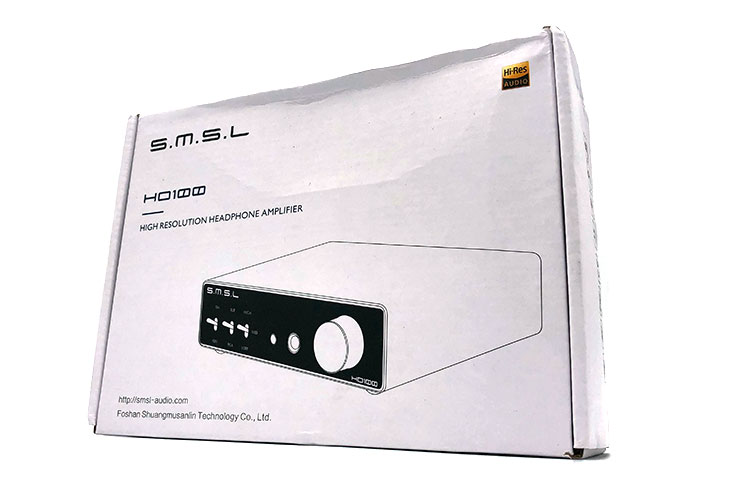Synergy
Power
With more than enough power to drive all headphones and IEMs in my collection, the amplifier section of the HO100 does prove its ability.
For sensitive loads, I tried on the 18Ω MM2 IEM from Hidizs on low gain and perceived no noise throughout the volume pot’s range without music playing. Using the Focal Clear MG on mid-gain, I only needed to push the volume to a quarter for comfortable listening volume.
Pushing the HO100 more, I brought out the higher impedance Sennheiser HD560s and Audio Technica ATH-ADX5000. Even on mid-gain, there is more than enough headroom with the HO100 only maxing at around noon for the ADX5000 and a bit less for the HD560s.
Pairings
Hinting at the transparency of HO100 during the sound impressions, pairing with it is more important to fully enjoy any listening.
I used the Chord Qutest the most during my impressions after using the Matrix Mini-i Pro 3 and DO100 first as DAC. Of the three, the HO100 opened up the most to the Qutest appearing airy and grand. The only minor setback of it not being fully resolving due to some limitations with the technicalities of the HO100.
While the Mini-i Pro 3 got a bit bright, the official DAC coupled with the HO100, the DO100 did excellently with producing a clean and neutral tonality working out the lows to mids to appear deeper and fuller. Although it noticeably limited the stage and then continued to create smaller images.
Headphone pairing, the revealing ADX5000 sifted through the imperfections on the detail retrieval of the HO100 but it did inject a welcome lift in the body of the vocal region. With the Clear MG, DAC pairing is important to pull off nice extended sub-bass and intimate midrange while preventing a lack of space to breathe.
Select Comparisons
SMSL SH-8s
$229.99
Technical
Both units boast identical 0.00006% THD+N using the same amplifier technology designed by SMSL. Although the SH-8s has a beefier 3W@32Ω power output making it more suitable for power-hungry headphones.
Limited to two gain settings, a 0dB low gain and 17.5dB high gain, IEM users will have to be more careful with controlling the volume of the SH-8s. However, the output impedance will not be a problem as SMSL measured it to be near zero.
Designed for personal listening, there is likewise no rear output seen in the SH-8s although the same pair of XLR and RCA inputs are found. And, in place of the 4.4mm jack’s role of outputting a balanced signal, a 4-pin XLR is used.
Design
For those with a fascination with odd numbers, there are two feet in front of the SH-8s and one at the back for a total of three. I did accidentally rock the unit a few times by absentmindedly pushing on the rear corners.
There is also a difference in the toggle switches used, the one on the HO100 has a thicker stem and stronger snap. But for the volume knob, the one on the SH-8s has markedly less play and more premium looking.
With no glass panel to elevate the design, the wider body of the SH-8s is a much simpler chassis with redistributed features. Only the position of the switches and outputs are swapped placing the 4-pin XLR at the left-most part of the face.
Performance
Same brand, same sound? While it is genuinely as close as ever with both having the same neutrality target, where the SH-8s prove its worth is in the technicalities.
Having a similar presence in the lower region, the more textured and better detail retrieval on the SH-8s is easily perceived. What’s more, there is a slight increase in punch and a clear bite making the HO100 seem soft when compared.
Adding space to the mids, singers are pushed out further into the background and with a more relaxed attack while piano pieces tend to sound a bit thinner. Separation is more definite and breathiness from vocals more pronounced.
There is a certain maturity to the treble of the SH-8s that is just clearer and more resolving in comparison. Checking in with how it affected the timbre of a violin, it is notably more emotive and yet having less oomph appears hollow on certain sections.
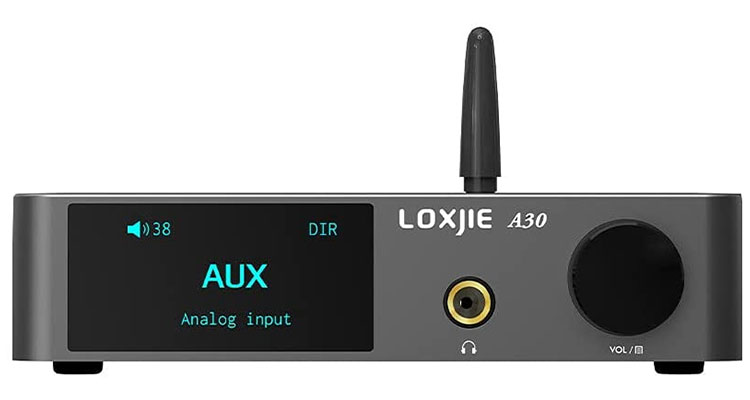
Loxjie A30
$189.99
Technical
While seemingly the perfect stack combo with the Loxjie D30 DAC, the A30 already comes with an onboard digital to analog converter whilst lower in performance, making it quite versatile.
And catering to a wide variety of enthusiasts, it can be used with headphones utilizing its 100mW single-ended output or passive speakers having a class-D Infineon MA12070 chip for up to 80W per channel power.
It has a rich list of digital inputs including USB, optical, and even Bluetooth. But notably single-ended, its analog input is limited to RCA passing through to a 6.3mm headphone jack output.
Design
Side by side, the A30 is slightly lower and deeper in measurement against the HO100 but covers the same width. It is similarly solid in construction but hides the screws at the bottom instead of the rear where the I/O resides.
Speaking of, the number of inputs and outputs found behind the unit can be quite crowded but understandably so as the A30 has both digital and analog input plus speaker and subwoofer output.
In front, we see a full-color IPS panel displaying the available controls of the A30 separating it from the analog switches of the HO100. Where I find the A30 behind is the short volume control it used unlike the more pronounced one on SMSL’s design.
Performance
While some audiophiles swear that neutrality is absolute and shouldn’t be touched, not all subscribe to this notion. Here is where the A30 comes in injecting a fair amount of coloration to its amplifier section.
Next to the HO100, the midbass of the A30 can be seen as more elevated and weightier but similarly not too defined in texture. But sub-bass on kick drums is lacking closing in the room having rolled off the expected rumble.
It has clean-sounding vocals that are placed aligned with the rest of the instruments. And while microdetail is not the strongest suit of the A30 listening to acoustic guitars and piano switches the mood towards sweetness and inviting.
The higher frequencies are less crisp and darker but, on some occasions, could get energetic and even more shouty. Horns and violins are much more isolated and easier to pick out on the HO100.
Topping L30
$139
Technical
Single-ended only in design, the L30 still boasts of having the same Nested Feedback Composite Amplifier (NFCA) module found on higher-end amplifiers from Topping such as the A90. Following this is the remarkable but slightly higher THD+N measured to be only 0.00007%.
Appreciating its IEM fanbase, it also comes with three gain settings beginning at -9.9dB which can go up to 0dB and 9.5dB for less sensitive gears. Its headphone output has an impedance of <0.1 and can produce a massive 3.5W of power for 16-ohm loads and 2.3W when coupled with 32-ohm gears.
Design
Similarities between the two units begin with the aluminum frame featuring a reflective black panel in front with clean cutouts for the toggle switches, headphone outputs, and volume wheel.
This makes usability between the two units quite close and easy to understand with the only added feature of a preamplifier available on Topping’s implementation.
Removing the branding, the L30 could be mistaken for a miniaturized HO100 having similar depth but thinner. Although, Topping got a bit more creative and offers their amplifier in four different colors from stealth black to vivid red.
Performance
Coming from a close competitor that similarly idealizes amplifier transparency, the Topping L30 is not to be taken lightly priced quite close to HO100.
More straightforward in presentation, the neutral but slightly rolled-off bass section of the L30 has significantly less body and slam versus the deeper and more pronounced thump on the HO100. Pushing both amplifiers to retrieve details in busier songs, the low-end of Topping’s tends to get more buried.
The edginess I detected in the vocal region of the HO100 could also be applied to the L30 as well as their tonality. While guitars are thinner and more plucked sounding, it having less reverb takes away from the scale of the stage.
Wind instruments are more shouty giving the impression that the HO100 is more refined in the upper region. While crunchier in texture, it lacks the same amount of air with cymbals dulled contributing to the smaller stage of the L30.
Our Verdict
Offering a satisfying level of transparency and refreshingly not too bright, the HO100 is a clean desktop amplifier well worth its value if paired with the right equipment.
With only a lack of microdetails and crowded low-end its two major faults, it is easy to say that for a sub-$200 budget, this new amplifier designed by SMSL is a step in the right direction.
And having a low noise floor and three gain setting makes it great for everyday use allowing those that are interested in a piece of versatile equipment for their growing collection of full-size headphones and in-ear monitors to be satisfied.
SMSL HO100 Specifications
- Input: RCA unbalanced, XLR balanced
- Headphone Output: 6.35mm unbalanced, 4.4mm balanced
- Output Power: 3W x 2 (16Ω), 1.5W x 2 (32Ω)
- Dynamic Range: 134dB
- THD+N: 0.00006%
- Input Impedance: 47kΩ
- Output Impedance: Near 0Ω
- Gain: Low (-9.5dB), Mid (0dB), High (15.5dB)
- Size: 150x128x39mm (WxHxD)
- Weight: 560g

